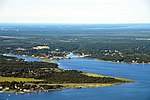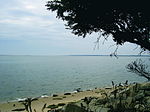East Moriches, New York
Brookhaven, New YorkCensus-designated places in New York (state)Census-designated places in Suffolk County, New YorkHamlets in New York (state)Hamlets in Suffolk County, New York ... and 4 more
Pages including recorded pronunciationsPopulated coastal places in New York (state)TWA Flight 800Use mdy dates from July 2023

East Moriches ( moh-RITCH-iz) is a hamlet and census-designated place in the Town of Brookhaven, Suffolk County, New York, United States. The population was 5,249 at the 2010 census.The name Moriches comes from Meritces, a Native American who owned land on Moriches Neck.
Excerpt from the Wikipedia article East Moriches, New York (License: CC BY-SA 3.0, Authors, Images).East Moriches, New York
Thoroughbred Court,
Geographical coordinates (GPS) Address Nearby Places Show on map
Geographical coordinates (GPS)
| Latitude | Longitude |
|---|---|
| N 40.806388888889 ° | E -72.756666666667 ° |
Address
Thoroughbred Court
11940
New York, United States
Open on Google Maps










